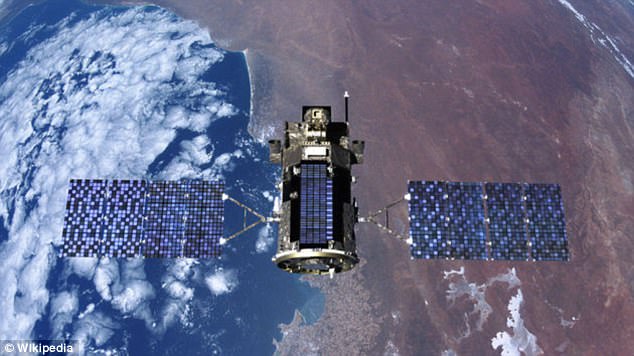
Space and the Russian Military: New Trends
Publication: Eurasia Daily Monitor Volume: 14 Issue: 79
By:

Russian President Vladimir Putin held a meeting on May 22, in Sochi, where he called for broadening the use of space technologies to improve the domestic economy and national defense, specifically referring to ballistic missile launch sensing satellites. He called for having at least 15 such satellites in orbit by 2020. Moreover, he noted Russia is prepared to work with foreign companies to obtain satellites as well as to procure sensing data from non-Russian orbital craft. At the same time, reflecting the pressures on the economy, the Russian space agency Roskosmos was tasked with investing the proceeds of its space operations back into the program, suggesting that the state budget may not be able to support these ambitions on its own (Kremlin.ru, May 22).
Testifying before the United States Congress the following day, the Director of National Intelligence, Daniel R. Coats, stated that “Russia and China remain committed to developing capabilities to challenge perceived adversaries in space, especially the United States.” As such, “Russia aims to improve intelligence collection, missile warning, and military communications systems to better support situational awareness and tactical weapons targeting. Russian plans to expand its imagery constellation and double or possibly triple the number of satellites by 2025” (Dni.gov, May 23).
Recent Russian military developments apparently attest to the renewed importance of the outer space domain in Russian thinking. But in fact, for 40 years—since the time of Soviet Marshal Nikolai Ogarkov—Russian military thought has pointed to space and to weapons based on what Ogarkov called “new physical principles” as the next and possibly decisive frontier of military operations. Today, the Russian government believes it finally has sufficient resources to procure weapons based on these advanced technologies to match what Beijing and Washington are perceived to operate or are presumably developing. Thus, Russia has decided it now makes sense to follow suit or, if possible, even take the lead in this area.
Recently, Moscow revived three low-Earth-orbit satellites—Kosmos 2491, 2499 and 2504—in ways that suggest they may be inspection satellites that can scan or match other satellites’ orbits and interact with them. Moreover, the government recently announced that the Russian military would conduct exercises in space. In addition, Russia has begun testing the Tundra satellite, which reportedly can reduce the detection time of hostile ballistic missile launches and greatly enhance operational effectiveness and the reliability of information concerning such threats. Moscow also plans to launch one or two missile early-warning satellites (SPRN) into orbit from its Plesetsk space launch facility. Upon reaching orbit, these vehicles will be able to immediately pinpoint launches of ballistic missiles from anywhere in the world. Moreover, in 2016, the ground-based automated control complex of Russia’s Aerospace Forces’ Space Troops conducted over 500,000 spacecraft command-and-control (C2) sessions and 120,000 sessions in support of satellite C2. Open source data places 140 variously tasked vehicles in space as belonging to the Russian Federation (Rossiyskaya Gazeta, May 4).
Clearly by enhancing the capability of its satellites to monitor, trace and interact with other satellites, Russia is boosting an aerospace and land-based system of missile defenses to counter Western and US (and Chinese) military capabilities. And since these Russian orbital systems are also apparently intended to be able to lock onto other satellites, they represent new efforts at developing anti-satellite weapons (ASAT) as well. When such capabilities are looked at in conjunction with the ongoing priority Moscow places on nuclear weapons, plans to boost the range of the Iskander-M road-mobile theater ballistic missile, as well as reports of new nuclear weapons being readied if not already deployed in the Arctic, several conclusions become clear. First, Russia is apparently contemplating a future space war; but second, Moscow evidently is also looking at the possible use of nuclear weapons in wartime as part of a comprehensive nuclear and missile defense complex (Kommersant, May 18; RIA Novosti, May 19).
In other words there appears to be no conceptual disjunction between ideas of terrestrial and space operations for Russia. Inasmuch as “weapons based on new physical principles”—lasers, drones, artificial intelligence (AI), robotics, etc.—are increasingly becoming commonplace in contemporary military operations, Russian deployments (if not its operational concepts) may be envisioning the battlefield as a seamless whole and devising capabilities to negate Western strategy, operations and capabilities. Under these circumstances, it is important to understand what these Russian deployments mean and how Moscow envisions they will be used. Indeed, the strength of Moscow’s military lies not so much in its capabilities—though they are formidable—but rather in the abiding capability of the general staff, the Ministry of Defense and the government to come up with innovative concepts of military operations and warfare in general and then to implement them. In these fields, a generation of neglect may have missed a great deal of Russian technological and military thinking that has not stood still.



